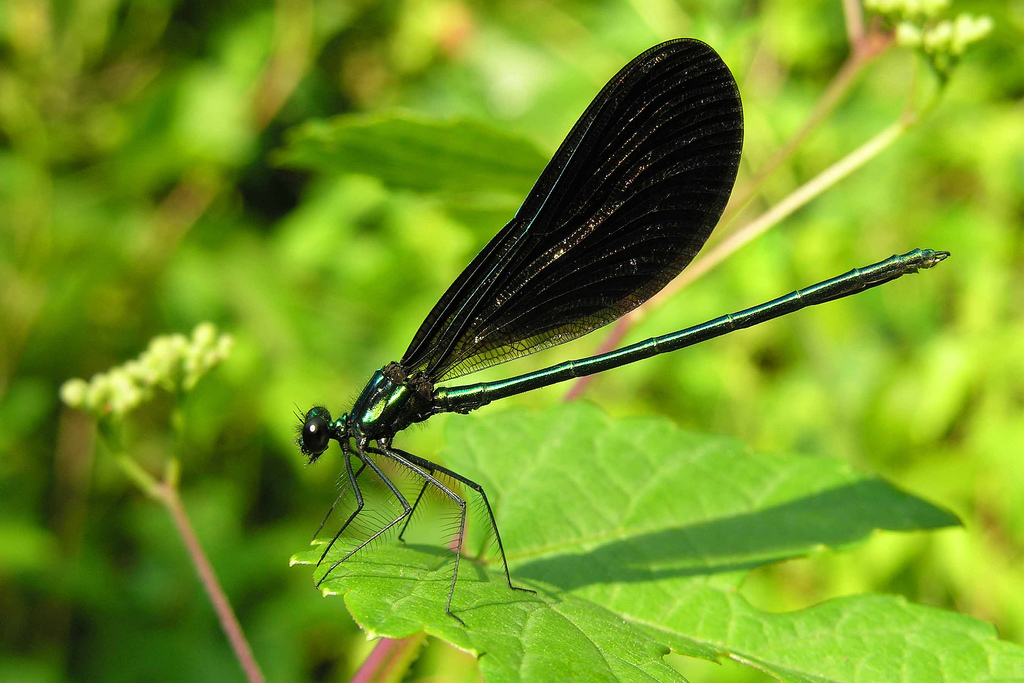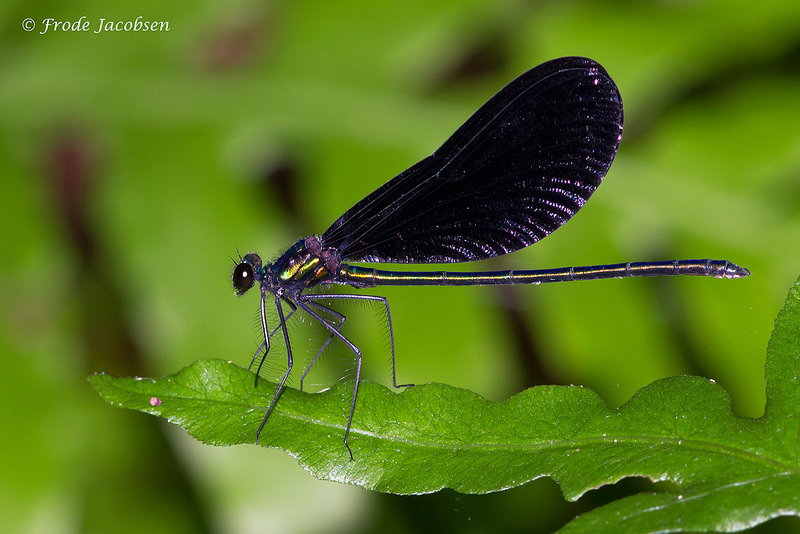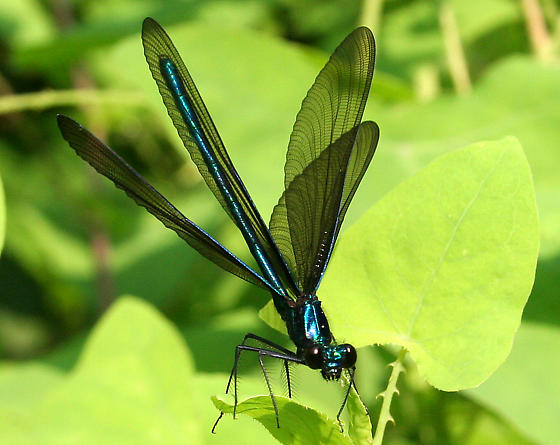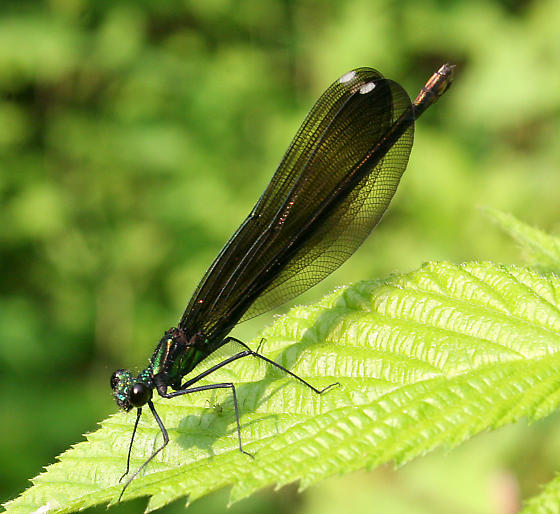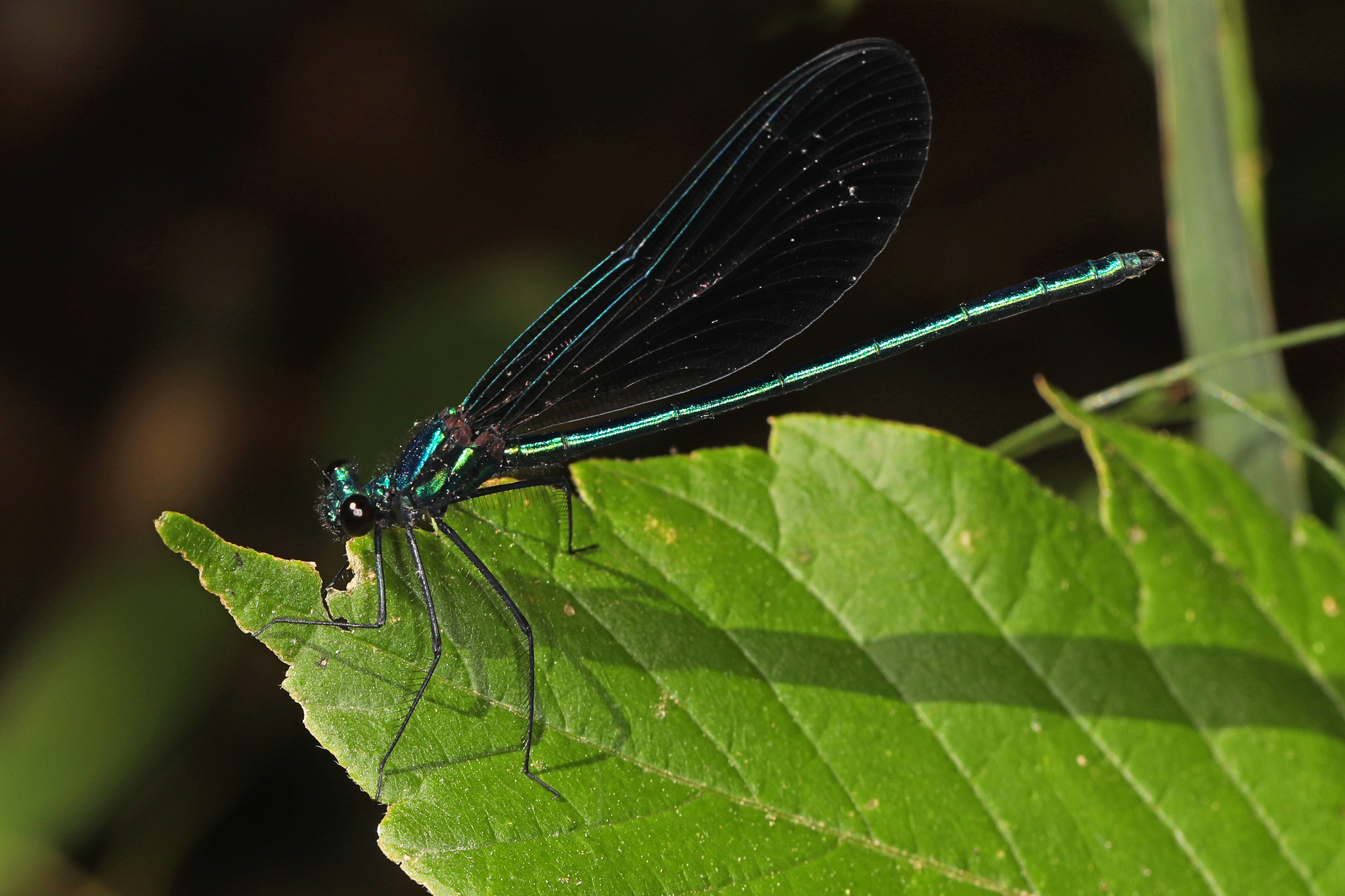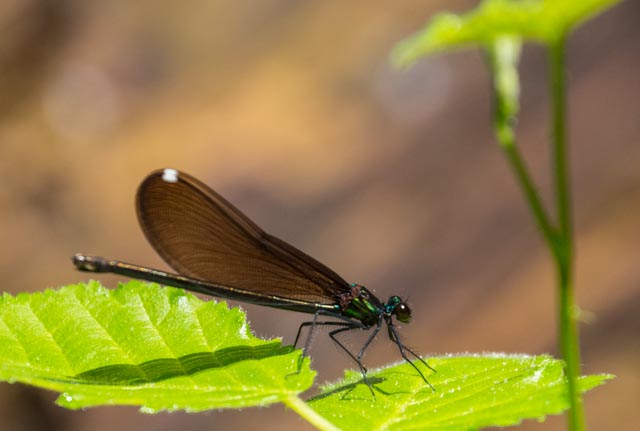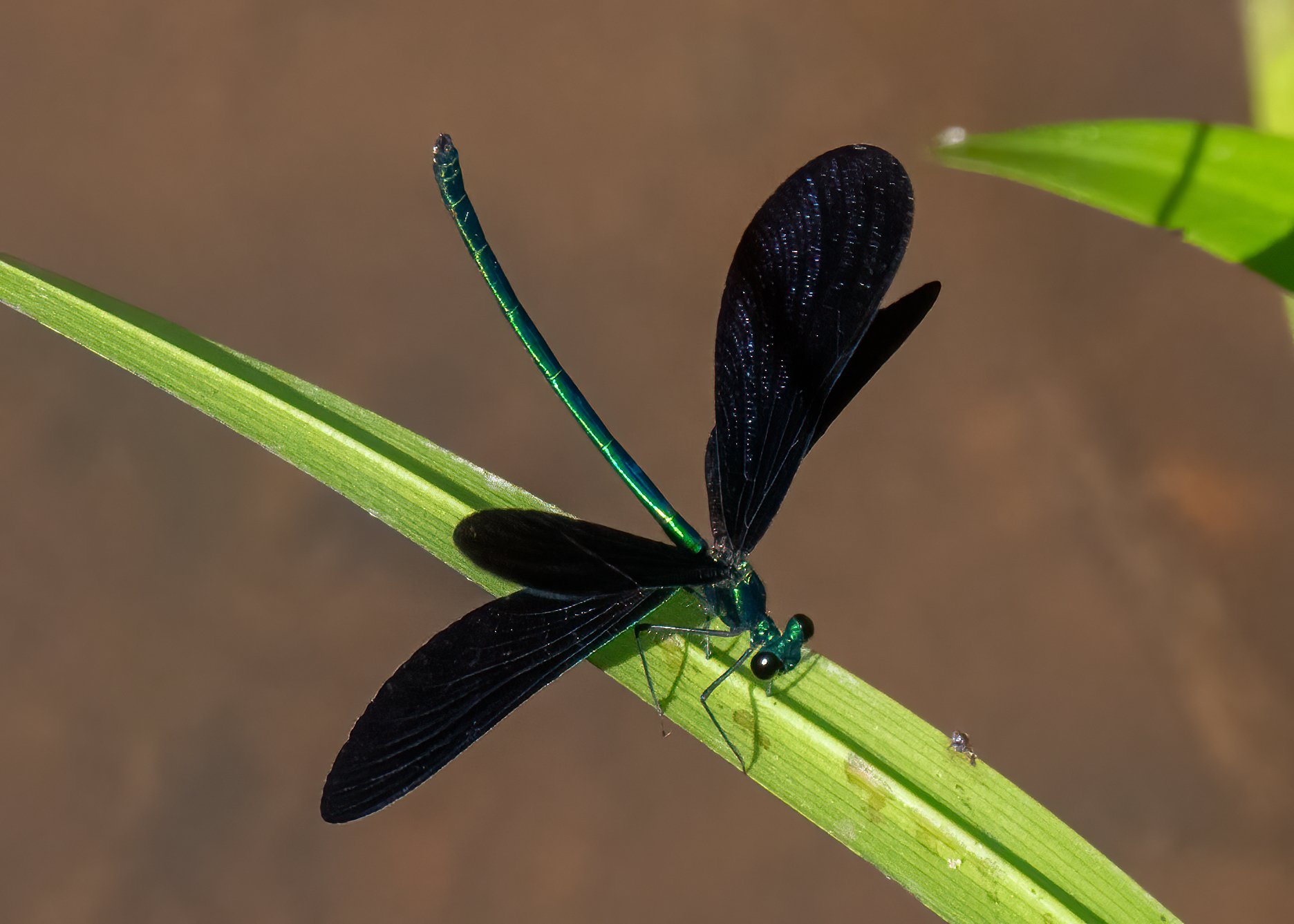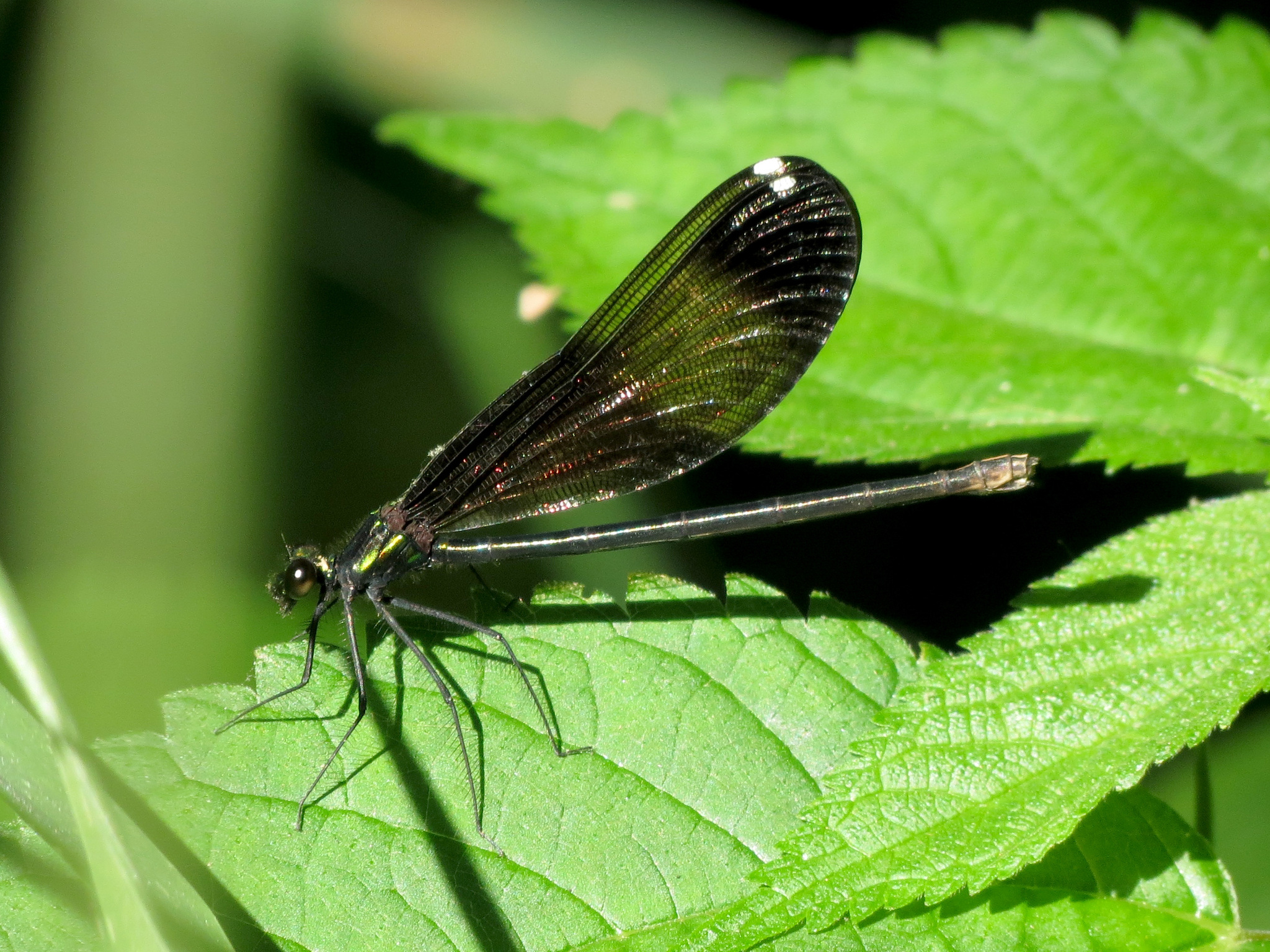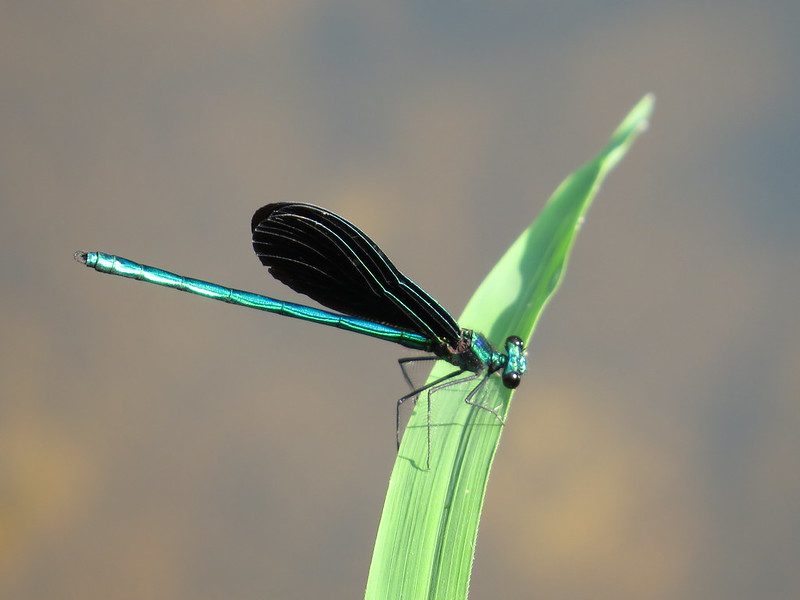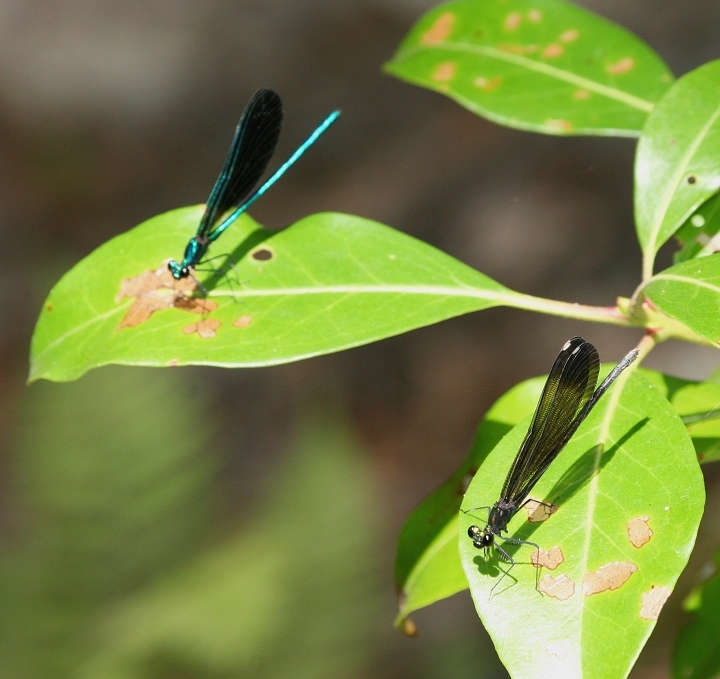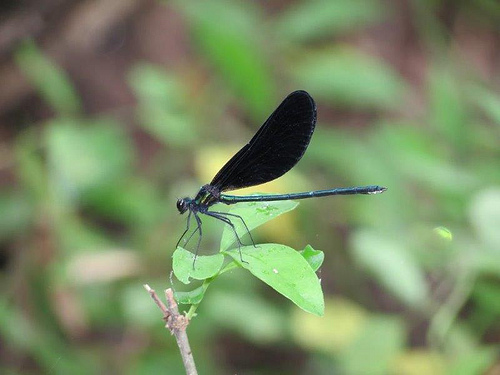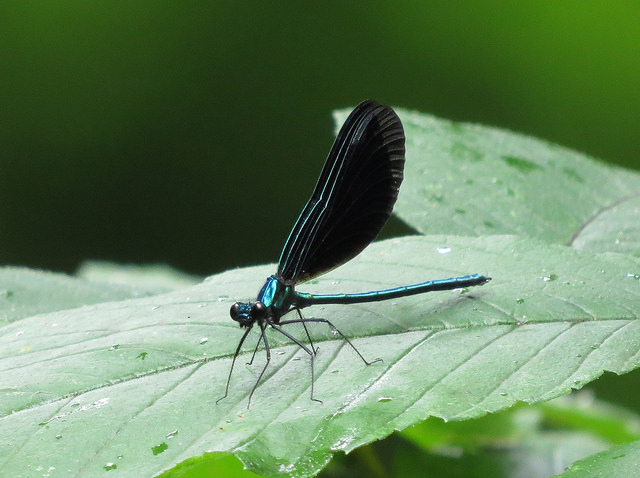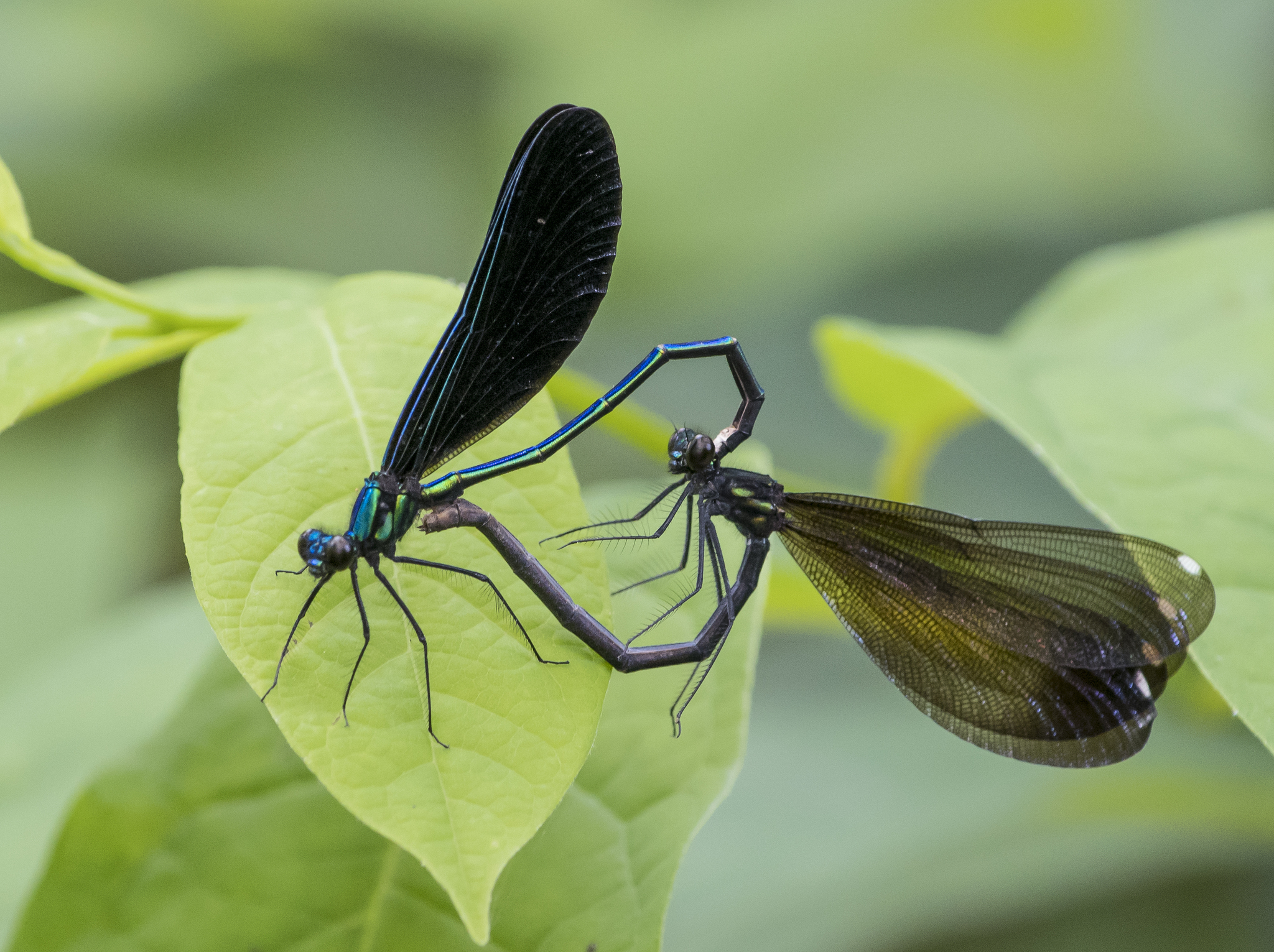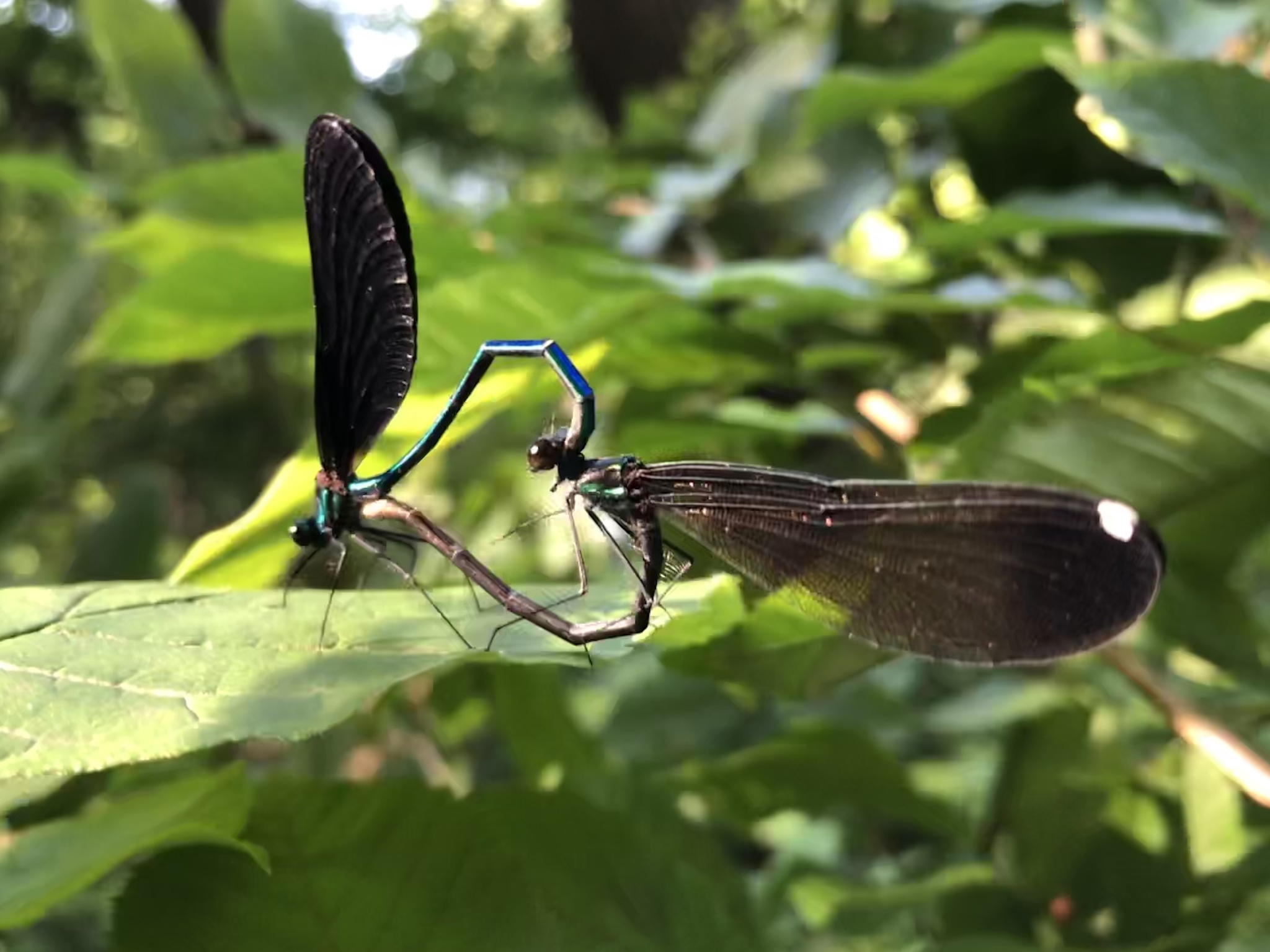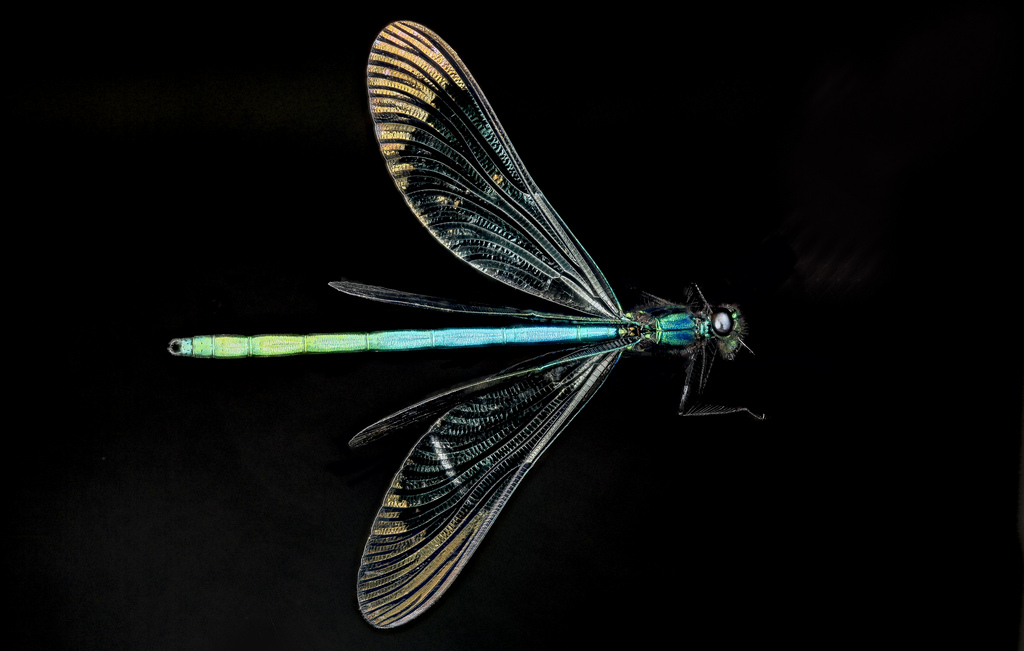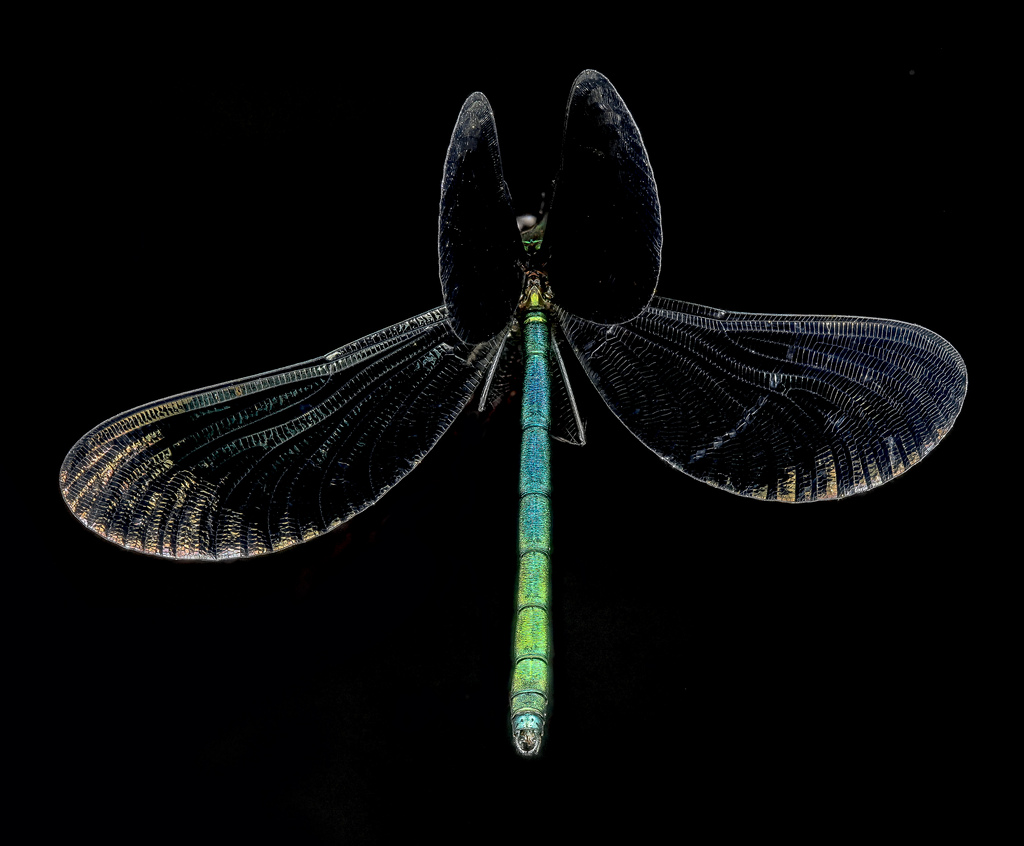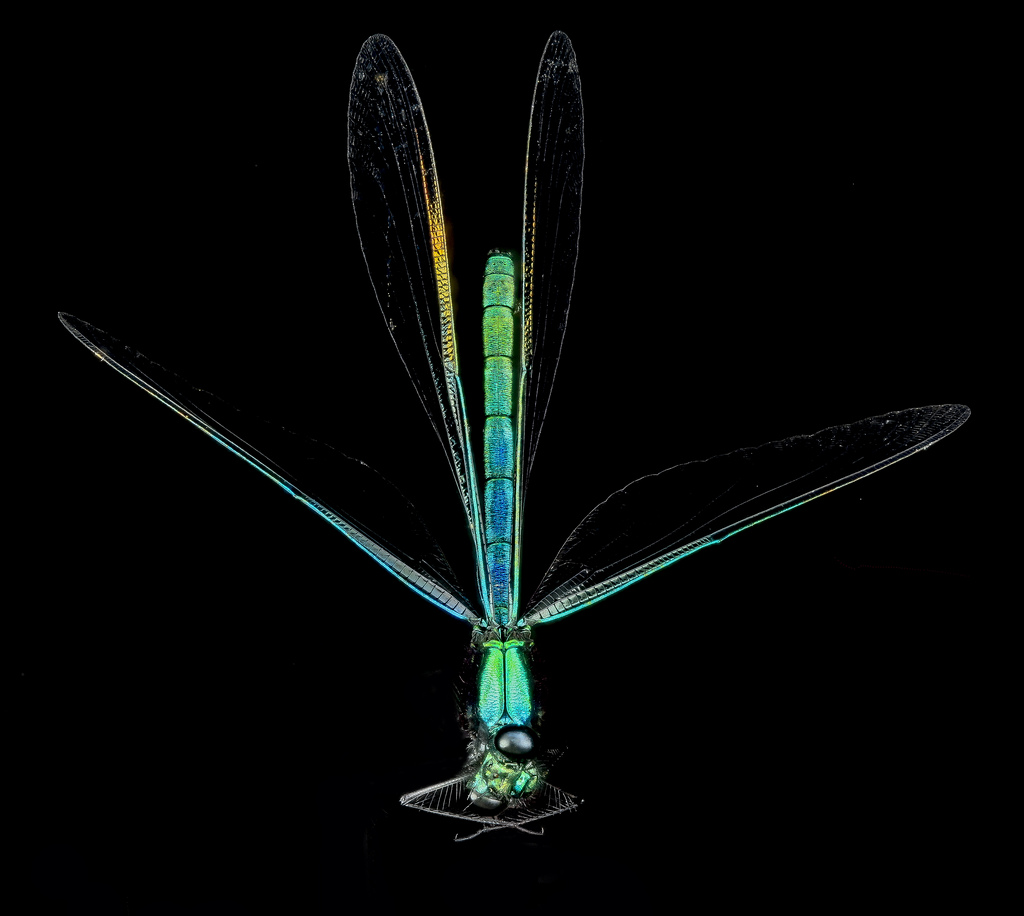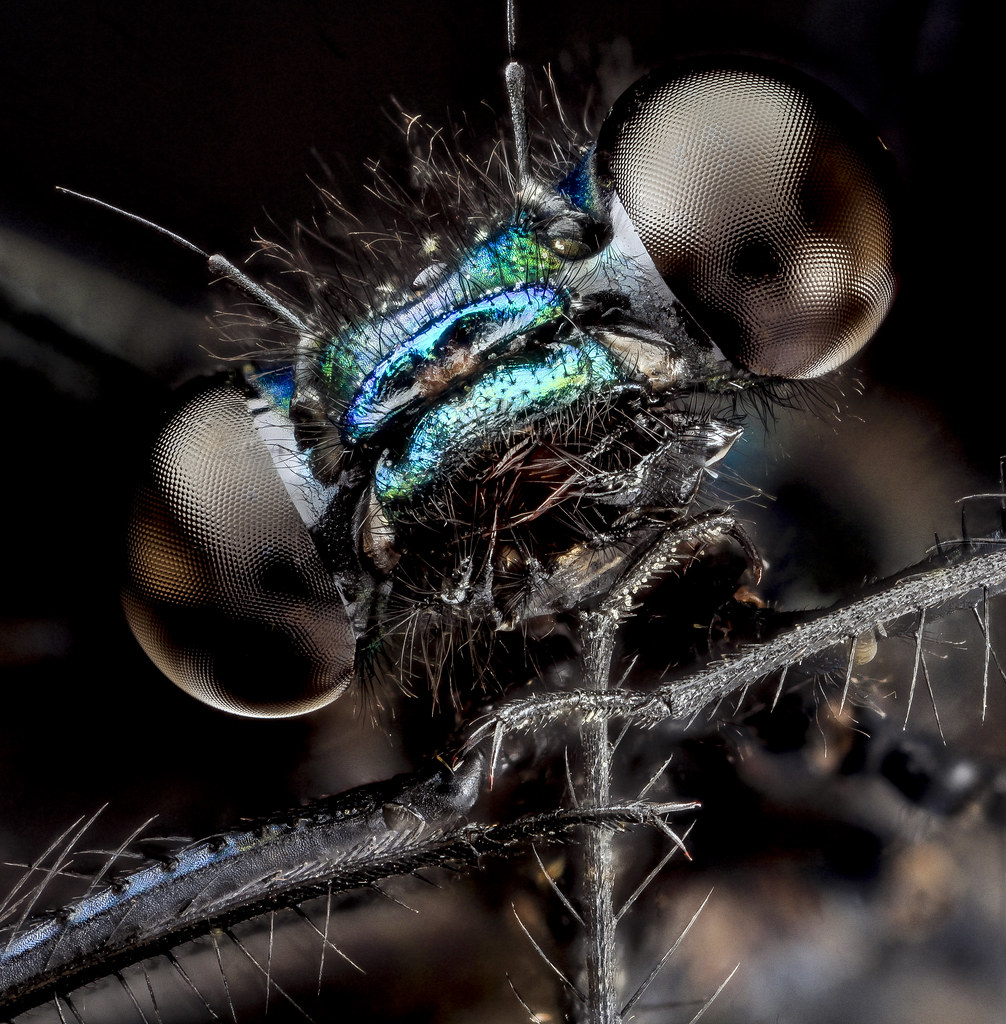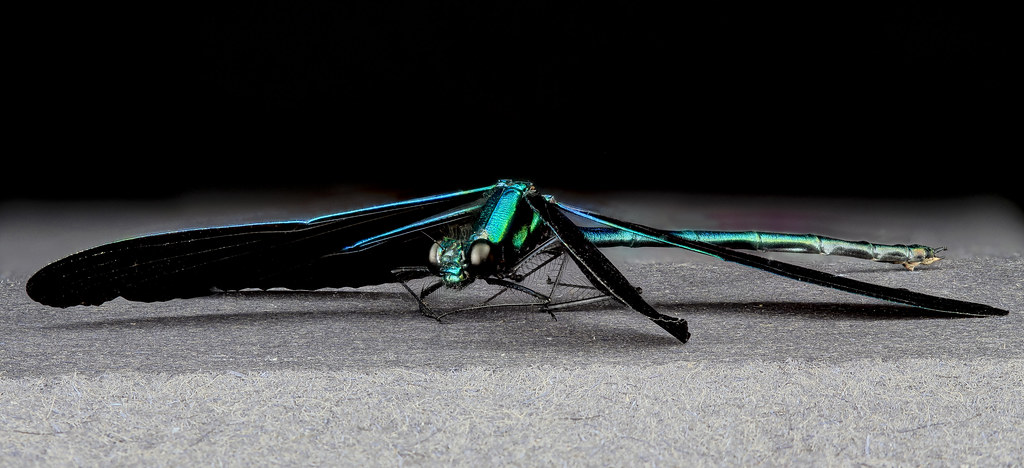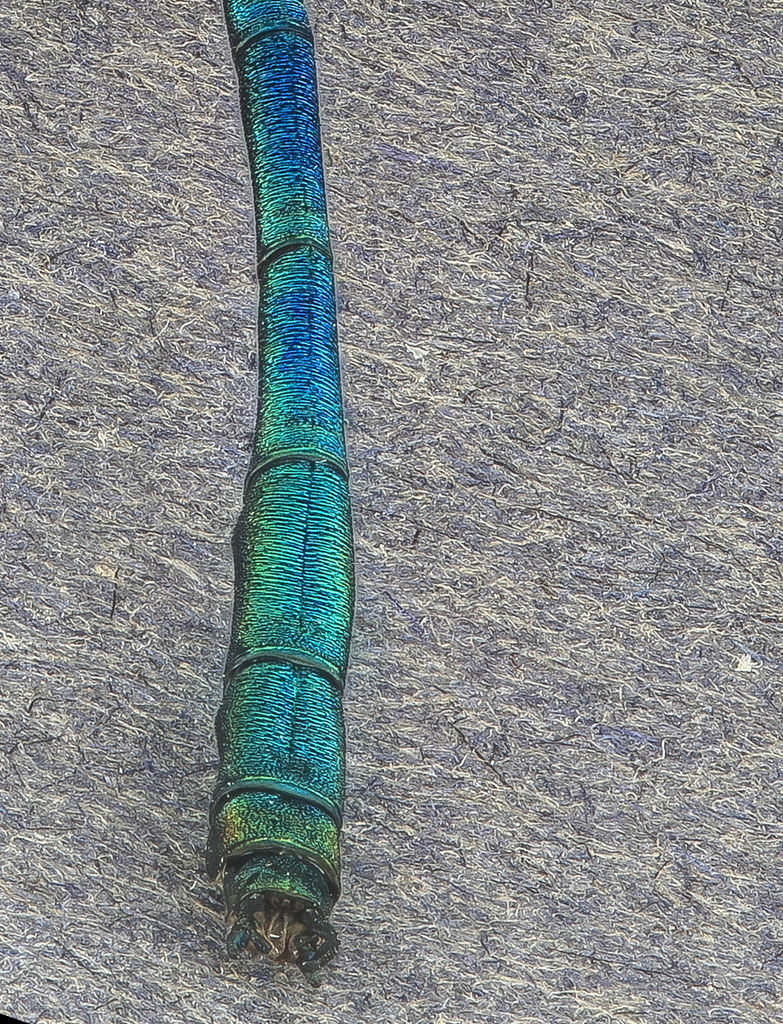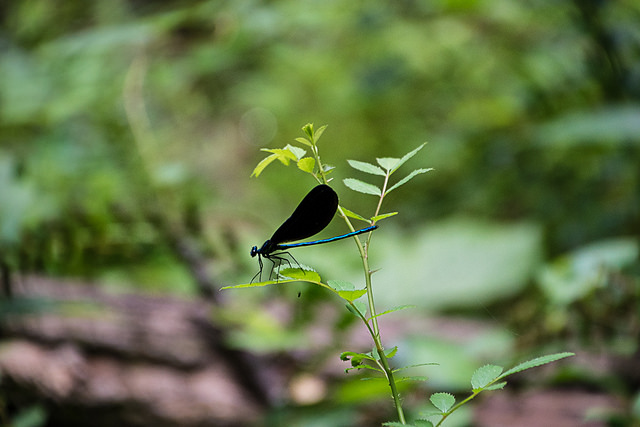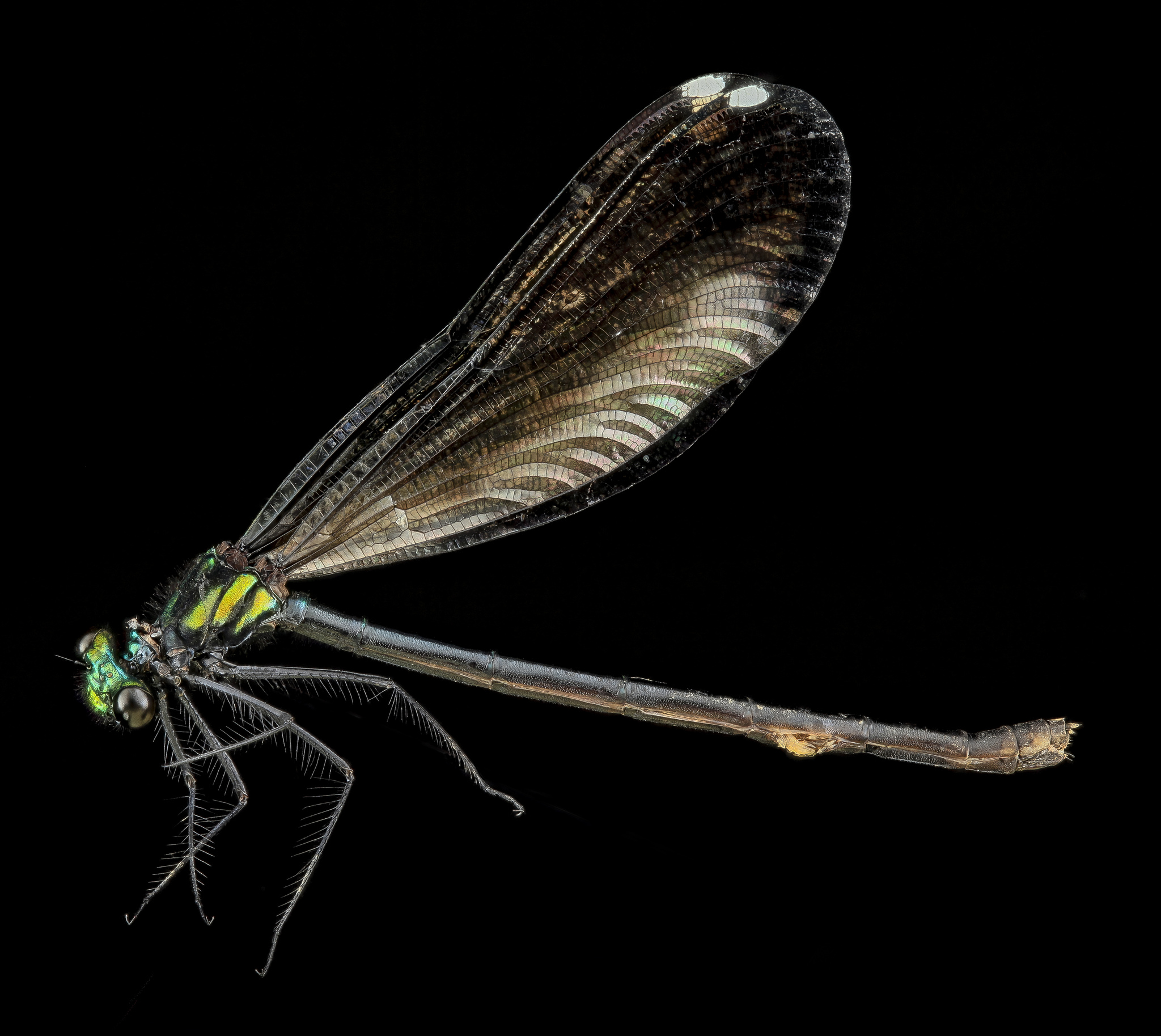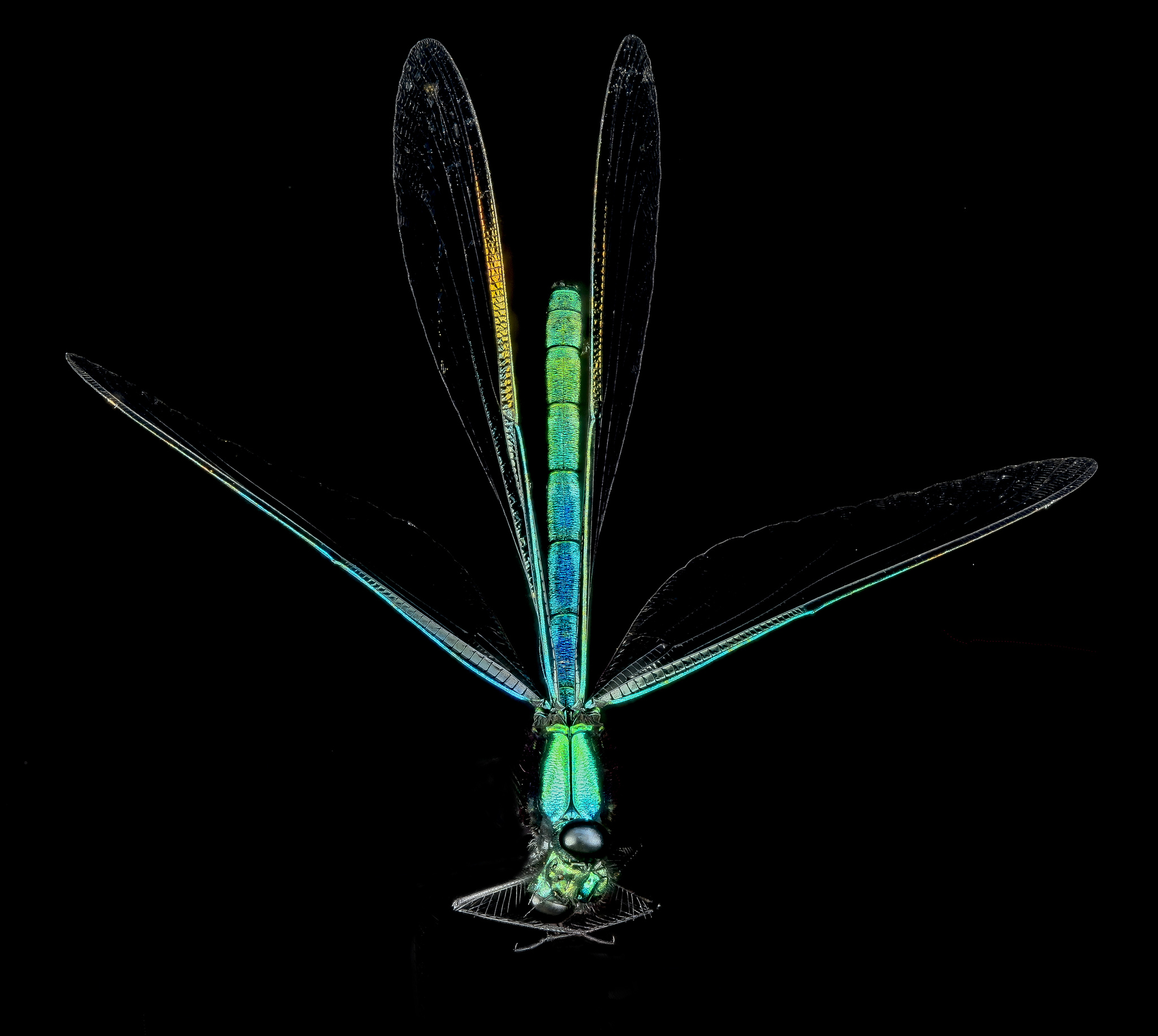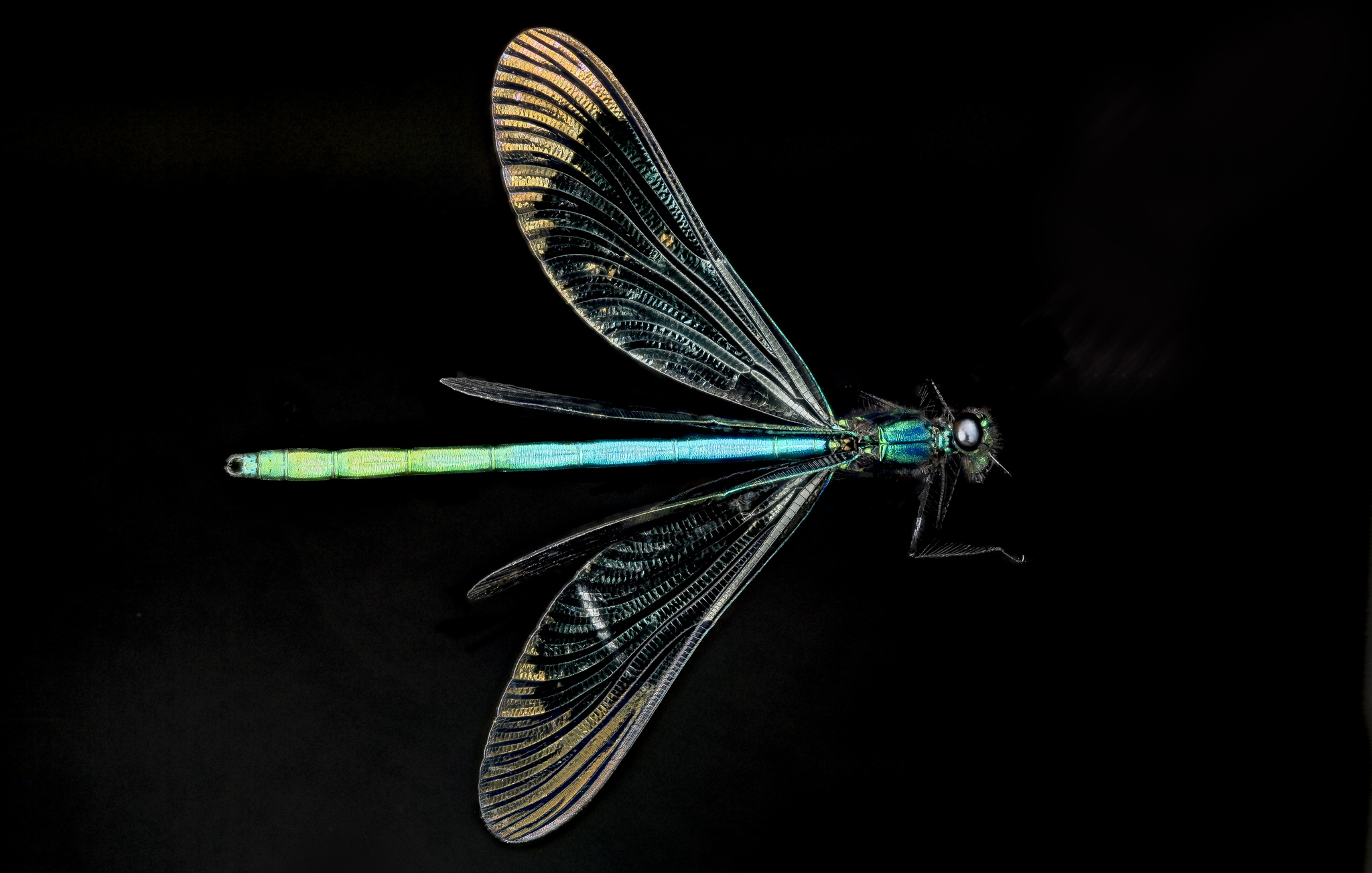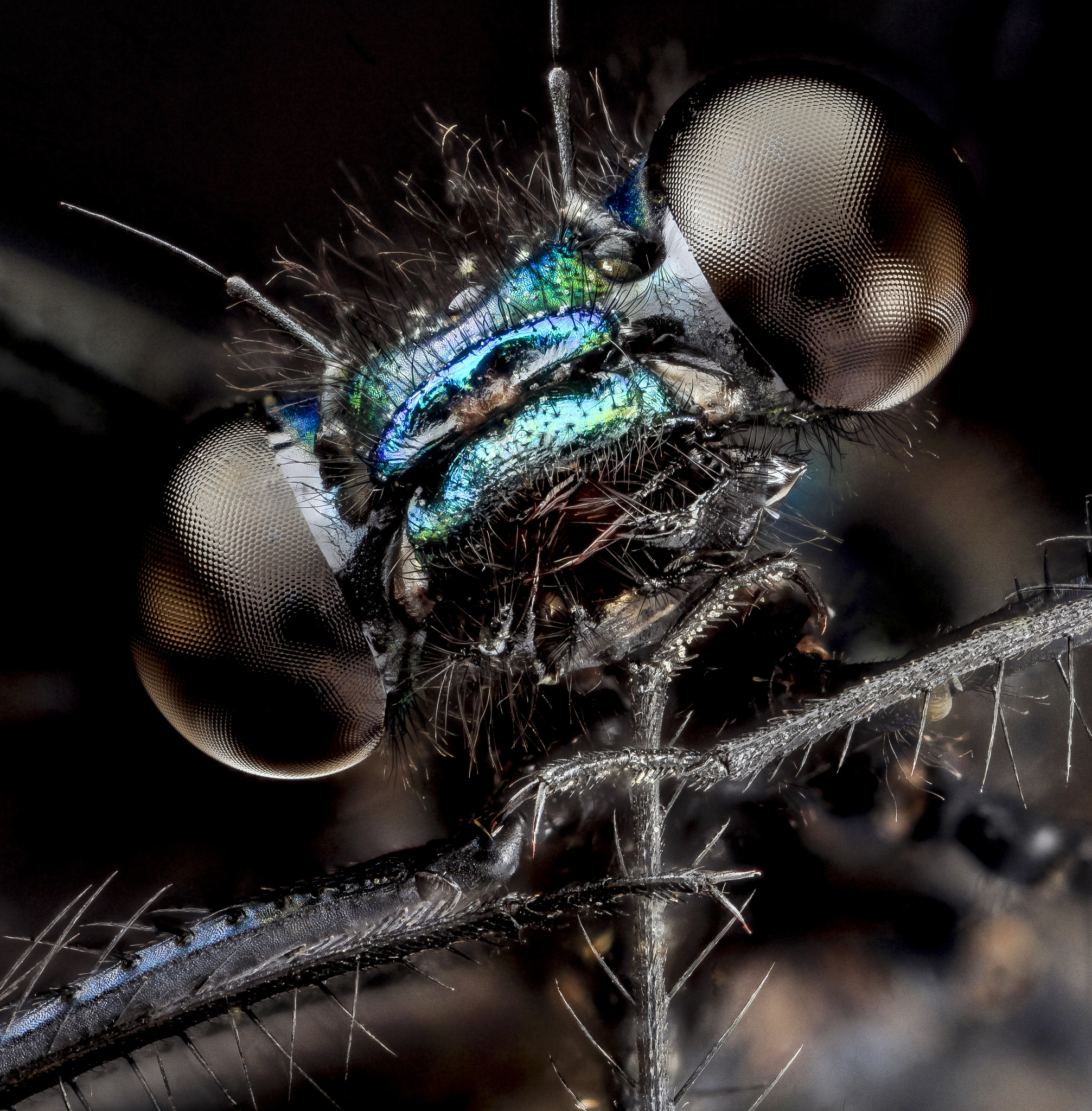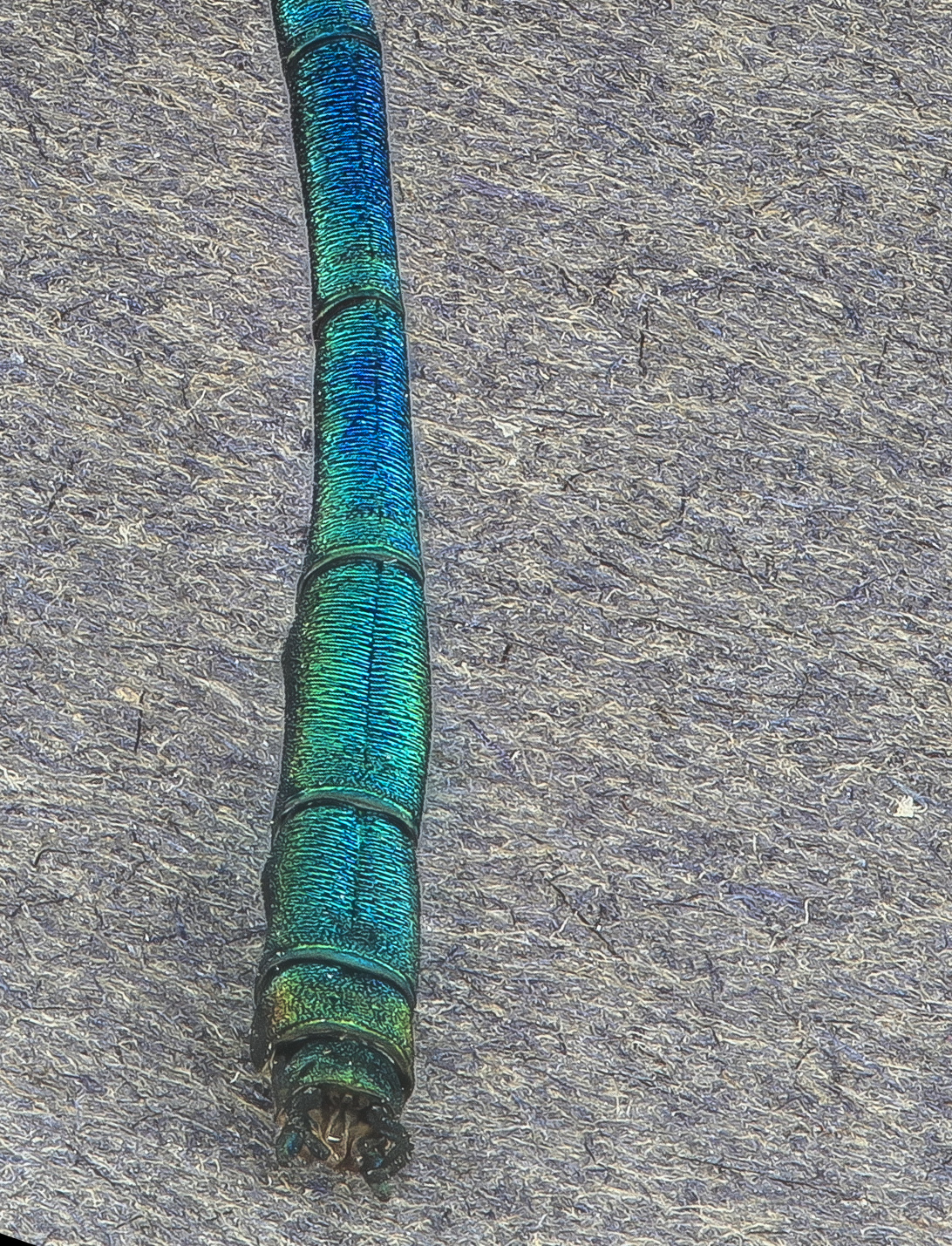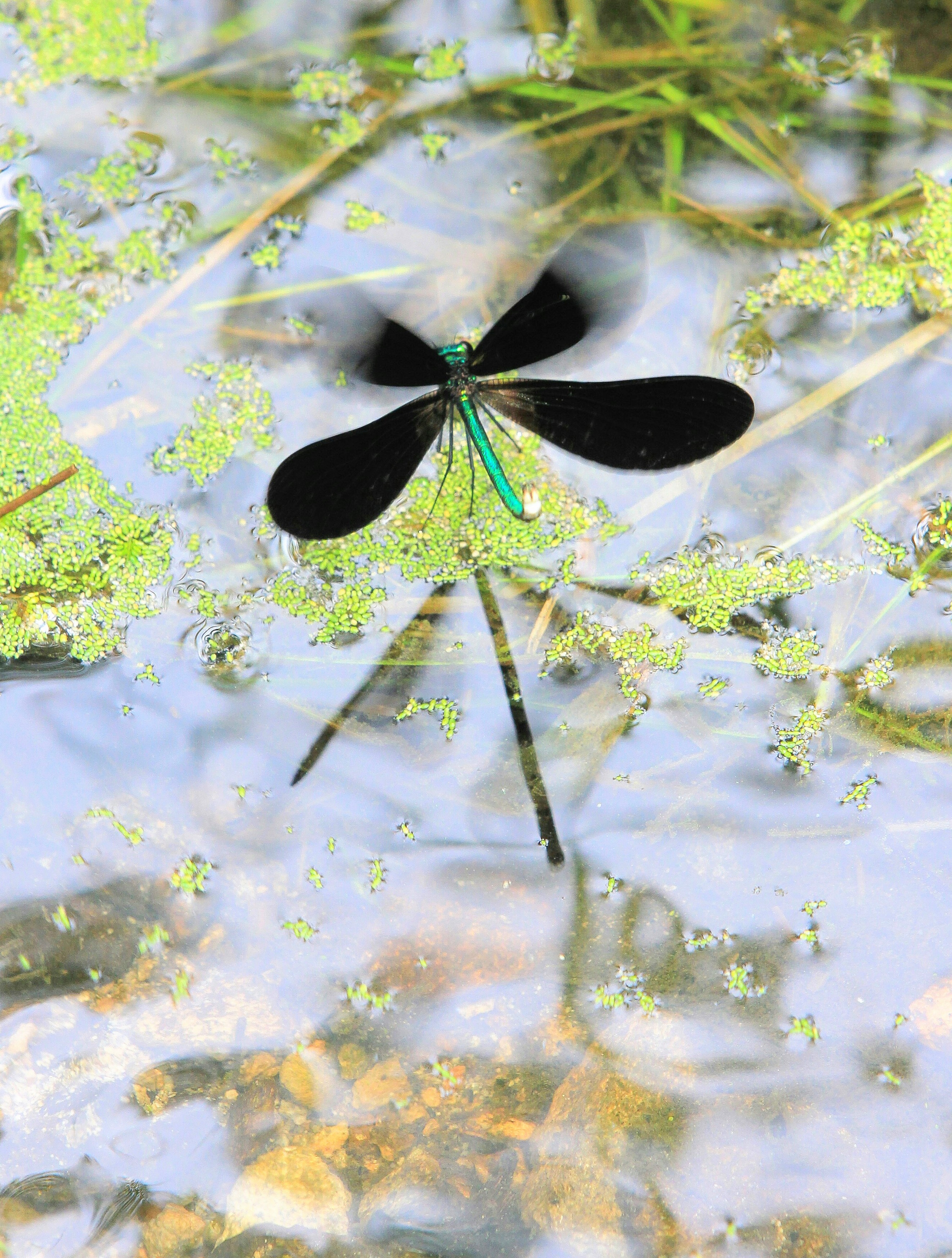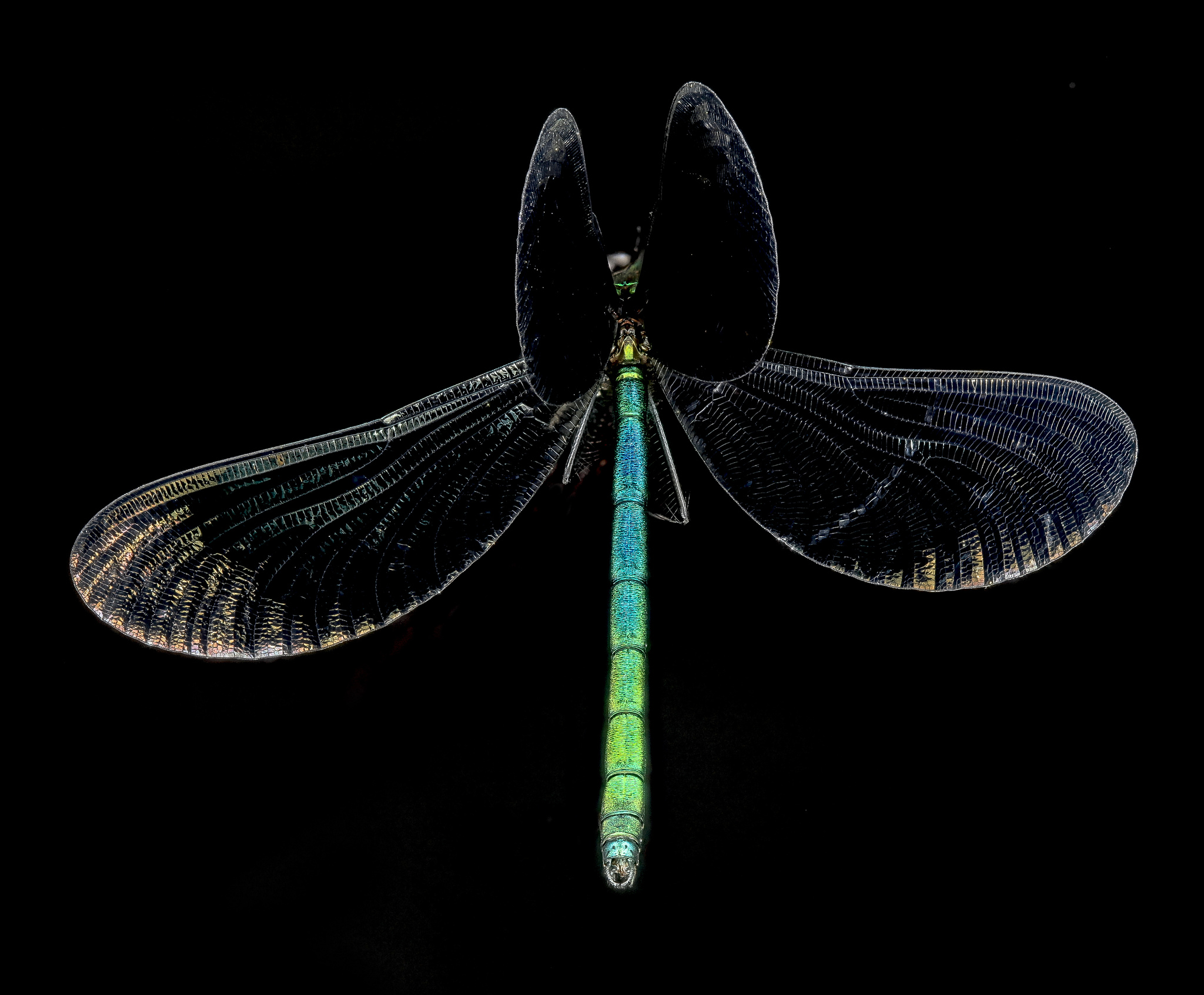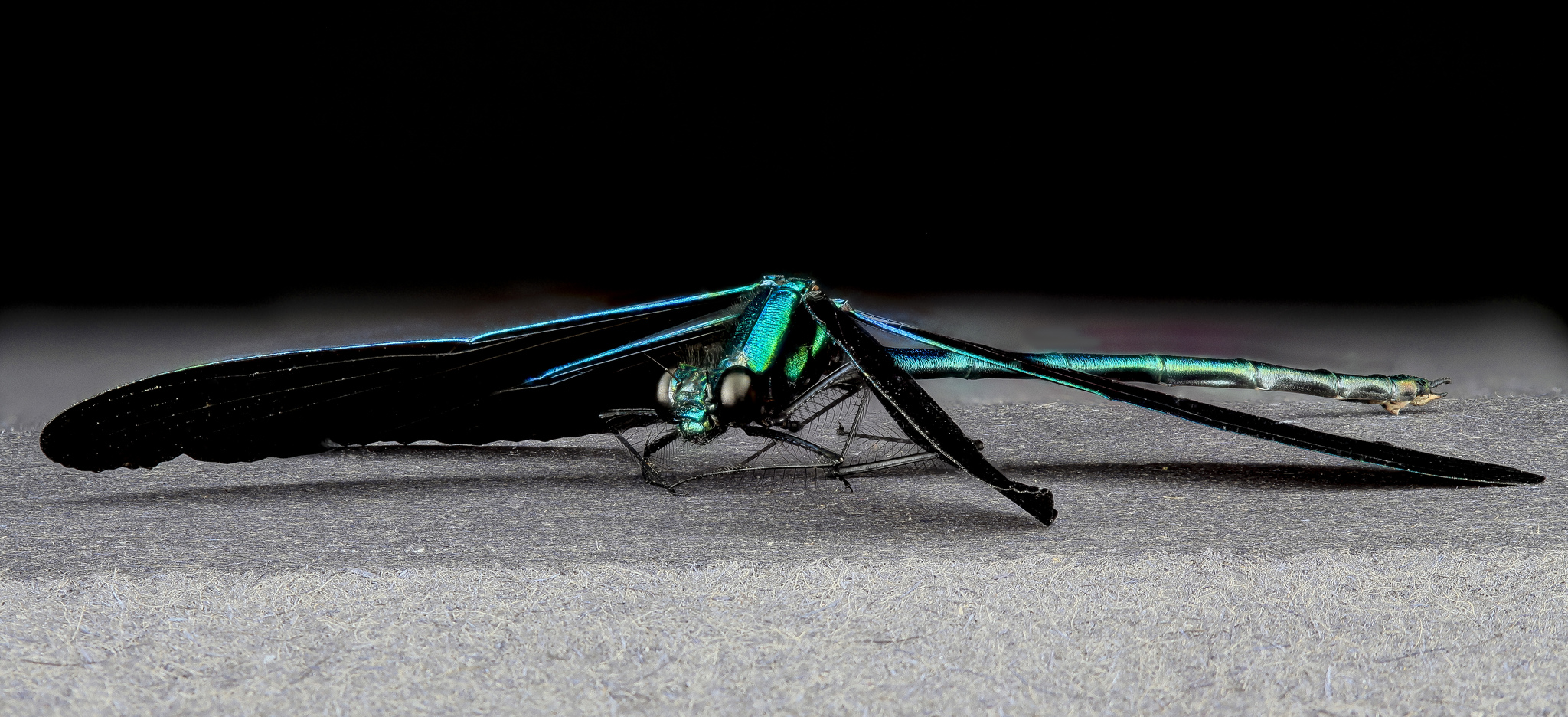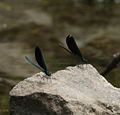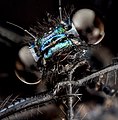Map Snapshot

























2,244 Records
Status
This species is one of the most common and familiar odonates, and occurs in every county in Maryland. They are common to abundant on many stream habitats, from small seeps to creeks to small rivers. The brilliant metallic green body, and broad, black wings of the male, present a striking visage. This distinctive species is easily recognized even by casual observers.
Seasonality Snapshot
Source: Wikipedia
| Ebony jewelwing | |
|---|---|

| |
| Male | |

| |
| Female | |
| Scientific classification | |
| Domain: | Eukaryota |
| Kingdom: | Animalia |
| Phylum: | Arthropoda |
| Class: | Insecta |
| Order: | Odonata |
| Suborder: | Zygoptera |
| Family: | Calopterygidae |
| Genus: | Calopteryx |
| Species: | C. maculata
|
| Binomial name | |
| Calopteryx maculata (Palisot de Beauvois, 1807)
| |
| Synonyms[2] | |
| |

The ebony jewelwing (Calopteryx maculata) is a species of broad-winged damselfly. One of about 150 species of Calopterygidae, it is found in the eastern U.S. and southeastern Canada, ranging west to the Great Plains. Other common names include black-winged damselfly.[1]
Description
[edit]It is between 39–57 mm (1.5–2.2 in). The male has a metallic blue-green body and black wings. The female is duller brown with smoky wings that have white spots near the tips (pseudopterostigmata[3]). The naiad is pale brown with darker markings. There are some spots in the wings.[4][verification needed]
Habitat
[edit]It lives near wooded streams and rivers, but it can move far from water.[5]
Breeding
[edit]Ebony jewelwings mate in the summer. The male holds the female behind her head with his tail or abdomen. The female lays eggs in the soft stems of aquatic plants. The naiad eats small aquatic insects. When the naiad is fully grown, it crawls out of the water and molts.[6]
Flight season
[edit]This damselfly species can be seen almost year-round in some regions.[7]
Ecology
[edit]Prey of this species includes[6] the tiger mosquito, giant willow aphid, fungus gnats, crane flies, large diving beetles, eastern dobsonfly, water fleas, green darner, aquatic oligochaetes, caddisflies, rotifers, copepods, amphipods, dogwood borer, six-spotted tiger beetle, freshwater triclads, and green hydra.
Predators of this damselfly include[6] birds such as the great crested flycatcher, American robin, mallard, red-winged blackbird, and blue jay, reptiles and amphibians such as the eastern painted turtle, common snapping turtle, and southern leopard frog, fish such as the bluegill, largemouth bass, yellow perch, creek chub, channel catfish, common carp, and northern hogsucker, mammals such as the big brown bat, and insects such as the green darner, large diving beetles, eastern dobsonfly, and common water strider.
The damselfly shelters among various plants and algaes in its habitat, including[6] green algae, yellow water lily, hydrilla, lizard's tail, pickerelweed, common cattail, upright sedge, common bladderwort, common duckweed, black willow, orange jewelweed, spotted Joe-pye weed, poison ivy, wild grape, sassafras, common greenbrier, and buttonbush.
Gallery
[edit]-
Male & female
-
Mating
-
Eyes
References
[edit]- ^ a b NatureServe (May 31, 2024). "Calopteryx maculata". NatureServe Network Biodiversity Location Data accessed through NatureServe Explorer. Arlington, Virginia: NatureServe. Retrieved June 23, 2024.
- ^ "Calopteryx maculata (Palisot de Beauvois, 1807)". Global Biodiversity Information Facility. Retrieved June 23, 2024.
- ^ "ebony jewelwing". minnesotaseasons.com. May 21, 2024. Retrieved June 23, 2024.
- ^ Lam, Ed (2004). Damselflies of the Northeast. Forest Hills, New York: Biodiversity Press. p. 20. ISBN 0975401505.
- ^ Species Calopteryx maculata - Ebony Jewelwing, BugGuide
- ^ a b c d "Ebony Jewelwing". Study of Northern Virginia Ecology. Fairfax County Public Schools. Archived from the original on July 22, 2017.
- ^ Ebony Jewelwing. Archived February 4, 2018, at the Wayback Machine The Dragonflies and Damselflies of New Jersey.

